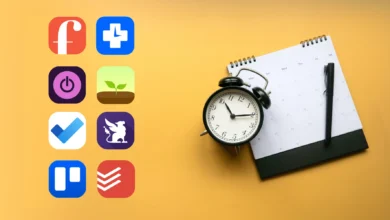How to Become a Professional Programmer in 6 Months
How to Become a Professional Programmer in 6 Months

How to Become a Professional Programmer in 6 Months
Becoming a professional programmer in just 6 months may sound ambitious—but with focused learning, discipline, and the right resources, it’s entirely possible. Many successful developers today are self-taught or transitioned from other fields by committing to a structured plan and practicing consistently.
Whether you’re starting from scratch or have some experience, this guide outlines a clear, 6-month roadmap to help you become a job-ready, professional programmer.
Month 1: Master the Fundamentals
Goal: Build a solid foundation in programming logic and syntax.
What to Learn:
- Choose a beginner-friendly language: Python or JavaScript are ideal.
- Basic programming concepts: variables, data types, conditionals, loops, functions.
- Simple projects: calculator, number guessing game, to-do list.
Tools & Resources:
- Sololearn, freeCodeCamp, or Codecademy
- Use a code editor like VS Code.
Tips:
- Write code daily.
- Don’t memorize—focus on understanding.
Month 2: Dive Into Real Projects and Problem Solving
Goal: Apply what you’ve learned to solve problems and build small apps.
What to Learn:
- Arrays/lists, objects, error handling, and file I/O.
- Solve coding challenges on platforms like HackerRank, LeetCode, or Codewars.
- Build small apps like a quiz app, contact book, or budget tracker.
Tips:
- Practice 1–2 coding problems per day.
- Start using Git and GitHub for version control.
Month 3: Learn Web Development (Frontend Basics)
Goal: Understand how websites work and start building them.
What to Learn:
- HTML5, CSS3, JavaScript (DOM manipulation, events)
- Responsive design (media queries, Flexbox, Grid)
- Tools: Chrome DevTools, GitHub Pages, Netlify
Build:
- Personal portfolio website
- Basic blog layout
- Interactive to-do app
Resources:
Month 4: Explore Backend and Databases
Goal: Learn how to build full-stack applications.
What to Learn:
- Backend with Node.js (or Python’s Flask/Django)
- RESTful APIs: GET, POST, PUT, DELETE
- Databases: SQL (PostgreSQL) or NoSQL (MongoDB)
- Authentication basics (e.g., JWT or OAuth)
Build:
- Notes app with user login
- Simple blog with comments
- REST API for your portfolio
Month 5: Build Full Projects and Polish Skills
Goal: Deepen your knowledge by working on larger, real-world projects.
What to Do:
- Choose 2–3 full projects to complete.
- Apply CRUD operations, API integration, user authentication.
- Start learning testing (unit tests) and debugging practices.
- Optimize and clean your code.
Project Ideas:
- Task management system
- Weather app with external API
- Budgeting or expense tracker with charts
Month 6: Prepare for the Job Market
Goal: Get ready to apply for junior developer or freelance roles.
What to Do:
- Polish your portfolio website with your best projects.
- Write clean, well-documented code on GitHub.
- Build a technical resume and LinkedIn profile.
- Practice coding interviews and behavioral questions.
- Apply for internships, junior developer jobs, or freelance gigs.
Extra Steps:
- Join developer communities (Discord, Reddit, Dev.to)
- Contribute to open-source projects
- Attend virtual coding meetups or hackathons
Key Tips for Success
- Consistency is king: Dedicate 2–4 hours daily to learning and building.
- Build, don’t just watch: Always code along with tutorials and make your own versions.
- Learn how to learn: Googling and reading documentation are vital developer skills.
- Ask for help: Use forums like Stack Overflow or Reddit’s r/learnprogramming.
- Track progress: Use a journal or Trello board to stay on schedule.
Conclusion
In 6 months, with focused effort, smart planning, and consistent practice, you can gain the skills needed to become a professional programmer. The journey won’t always be easy, but it’s incredibly rewarding. You’ll not only build apps—you’ll build confidence, career options, and the foundation for lifelong learning.
So start today—and in half a year, you could be building the future.




